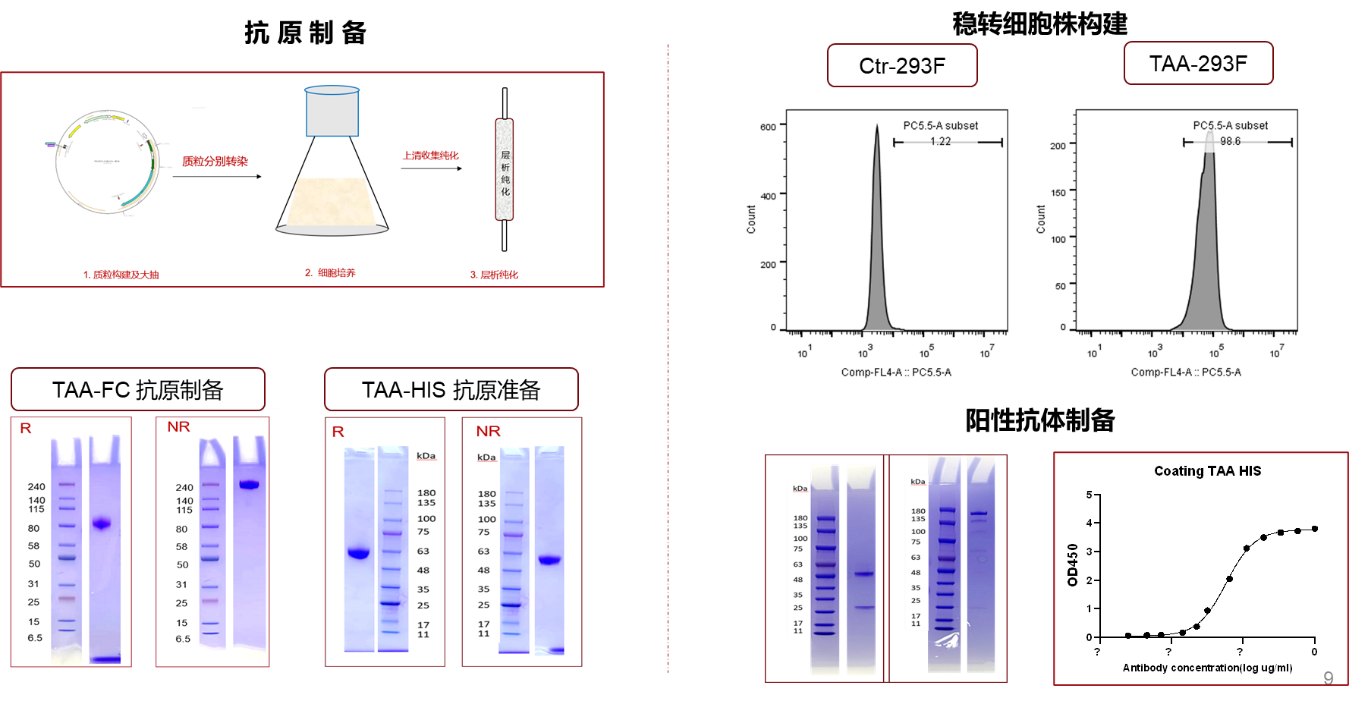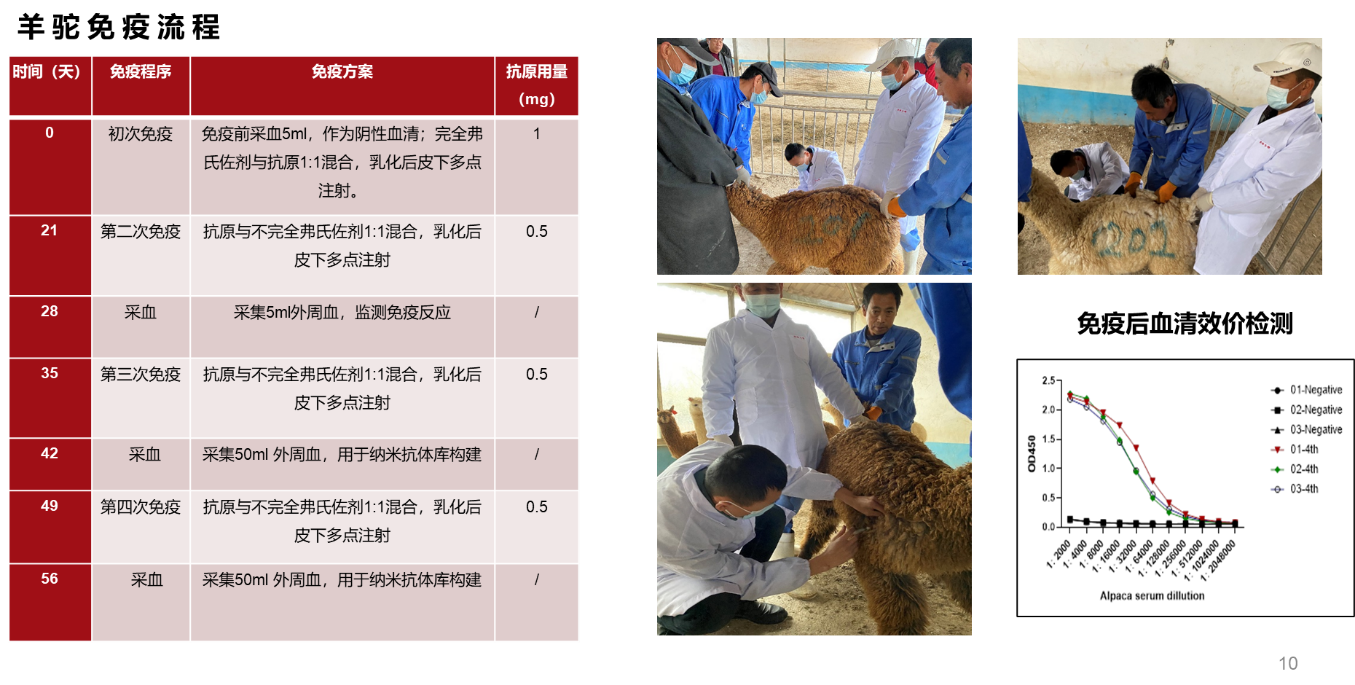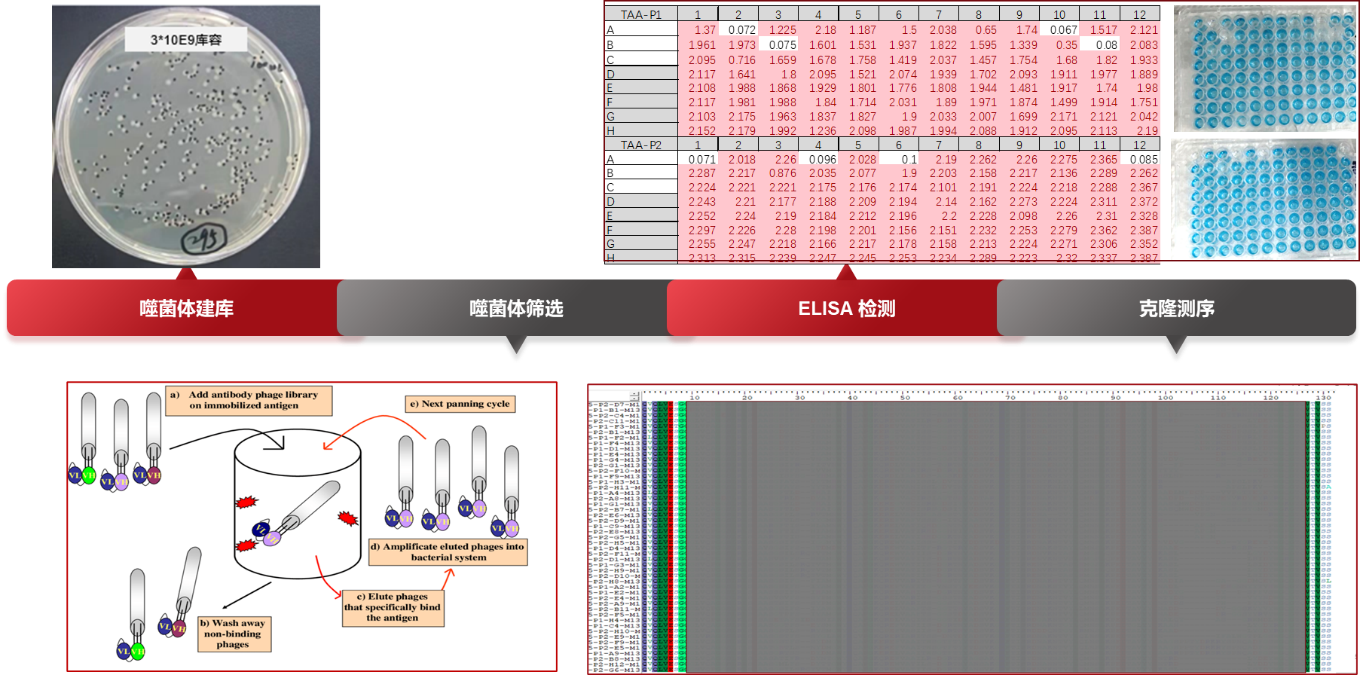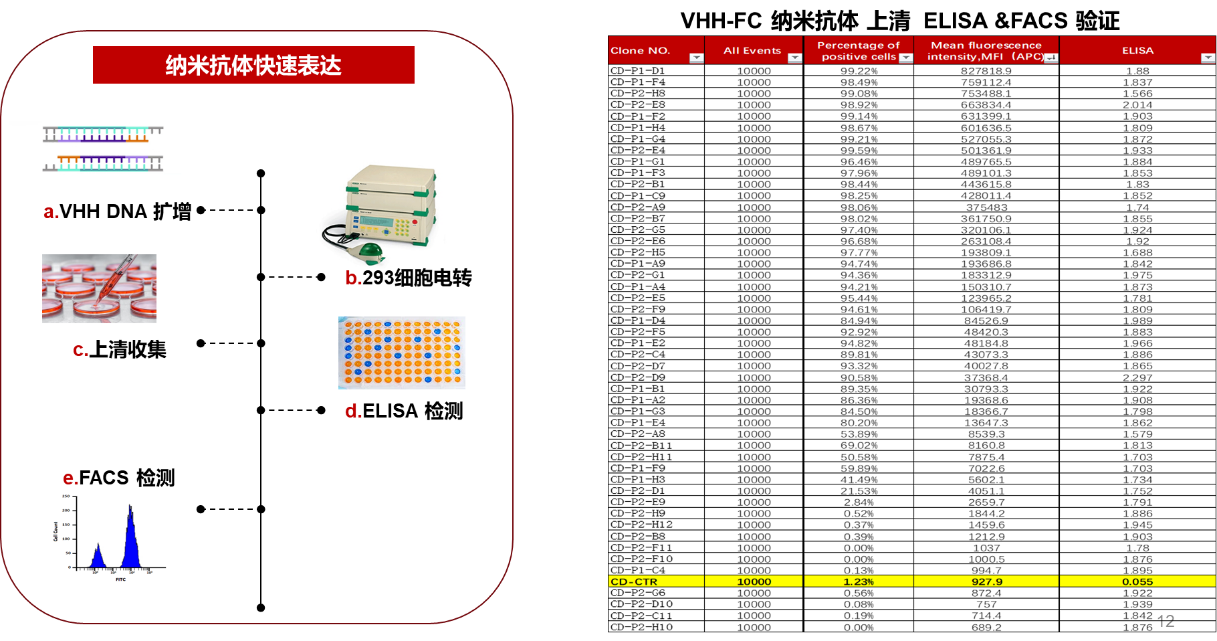
Technology Platform
Nanobody Screening Technology Platform
1. Source of Nanobodies
A unique antibody is produced in the camelid family: a heavy chain antibody (HcAb) that lacks the light chain. The variable region fragments derived from such antibodies are generally referred to as Nanobody. Nanobodies have the characteristics of high affinity and high specificity.
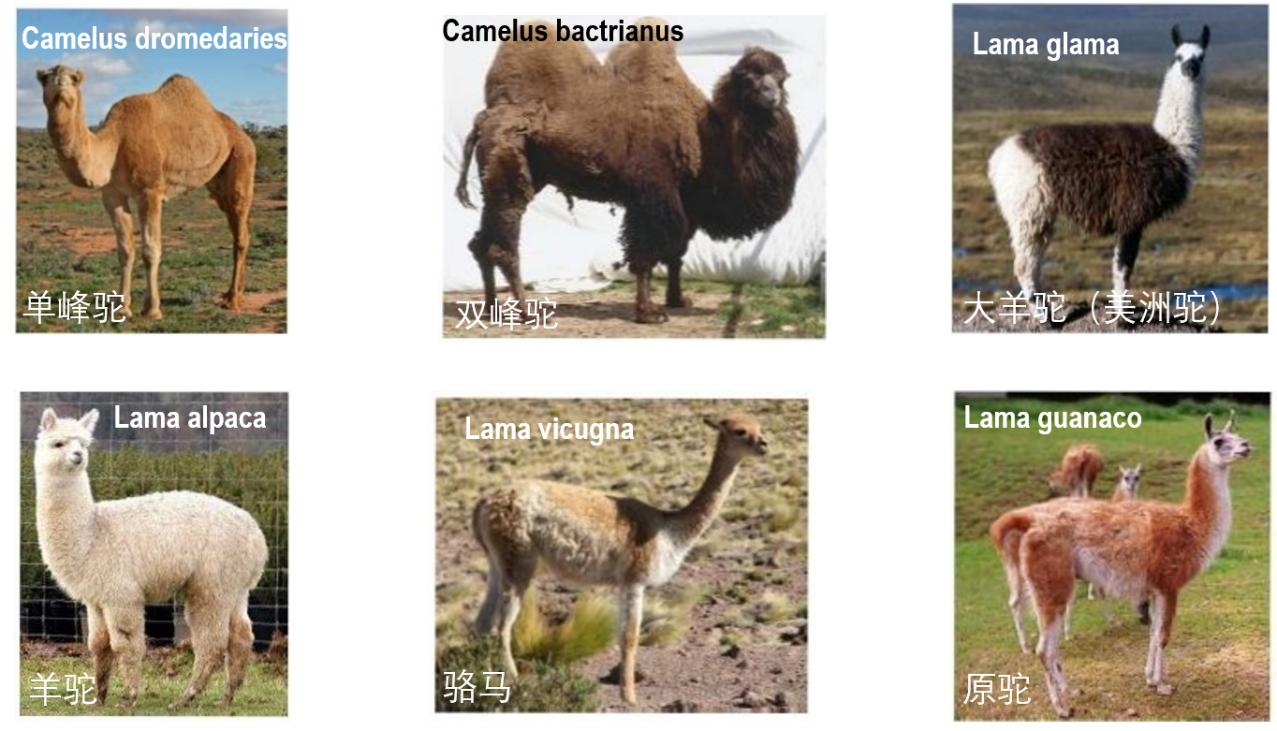
2. Nanobody structure
The nanobody is the variable region part of the heavy chain antibody VHH (the heavy chain variable region of the camel heavy chain antibody, named VHH), with a molecular weight of only 12-15kDa, and its stability is significantly better than that of the human antibody. Nanobodies also contain three CDRs, of which CDR3 plays a major role in affinity. Compared with human antibody VH, the CDR3 of the nanobody is longer and can form a convex loop structure, which can go deep into the interior of the antigen and better bind to the antigen, so the affinity is higher. In addition, the hydrophobic residue of the FR2 of the nanobody is replaced by a hydrophilic residue, which is more water-soluble and is not easy to form aggregates.

3. Advantages of nanobodies
Small molecular weight:
Nanobodies are single domains with a size of only 12-15kD, while typical immunoglobulins are about 150kD. The smaller size of the single domain allows them to physically recognize epitopes that are usually not available to traditional antibodies, including the active site of many enzymes; the smaller size also allows them to penetrate tissues faster and even easily cross the blood-brain barrier.
Good stability:
In the nanobody molecule, FR1 and FR3 form a pair of disulfide bonds, CDR1 and CDR3 also have a pair of disulfide bonds, making the nanobody very stable, and resistant to high acid and temperature, and even able to fold into a functional protein after denaturation.
High solubility:
The four amino acid residues V37, G44,L45 and W47 in the FR2 functional area of the traditional antibody VH domain are involved in the interaction of VL, and are all hydrophobic amino acids. In the nanobody, the four amino acids were mutated to F/Y37,E/Q44,R/C45,G/F/S/L47, and the hydrophobic amino acids were mutated to hydrophilic amino acids, which made the nanobody have very high solubility.


4. Application of nanobodies
Nanobodies have a wide range of applications, mainly in the following aspects:
1. Affinity capture reagent
Due to its small size and single domain format, the Nanobody has a larger binding surface and lower non-specific background binding. Since they bind in a monovalent manner, they can be eluted under mild conditions, and their high stability allows repeated use.
2. Crystal Mate
Nanobodies have been used to accompany protein crystallization because of their ability to lock proteins in specific conformations, stabilize flexible domains, and protect aggregating surfaces from solvents. They have been used in many protein crystallization studies, and the same properties have also been used to stabilize amyloid-β fibrils and prevent the formation of mature amyloid fibrils.
3. Target imaging and immune modulation
Nanobodies can be expressed intracellularly in a fusion with a fluorescent protein to track the activity of their antigen. They can also be used to functionally knock out antigens in cells and fuse with signal peptides to target specific subcellular compartments.
4. Biosensors
Nanobodies can be applied to biosensors in the fields of medical, environmental and food analysis. Their site-specific functional groups are easy to introduce, and their small size allows for high capacity binding surfaces, leading to higher sensitivity.
5. In vivo imaging
Nanobodies can be used as tracers for non-invasive molecular imaging to study disease processes. Their small size allows for rapid tissue penetration and blood clearance.
CAR-T drug development
Nanobodies can be loaded onto the surface of CAR-T cells with single or multiple molecules in tandem to achieve CAR-T targeted killing. It can be used to prepare CAR-T that recognize dual-site or dual-target.
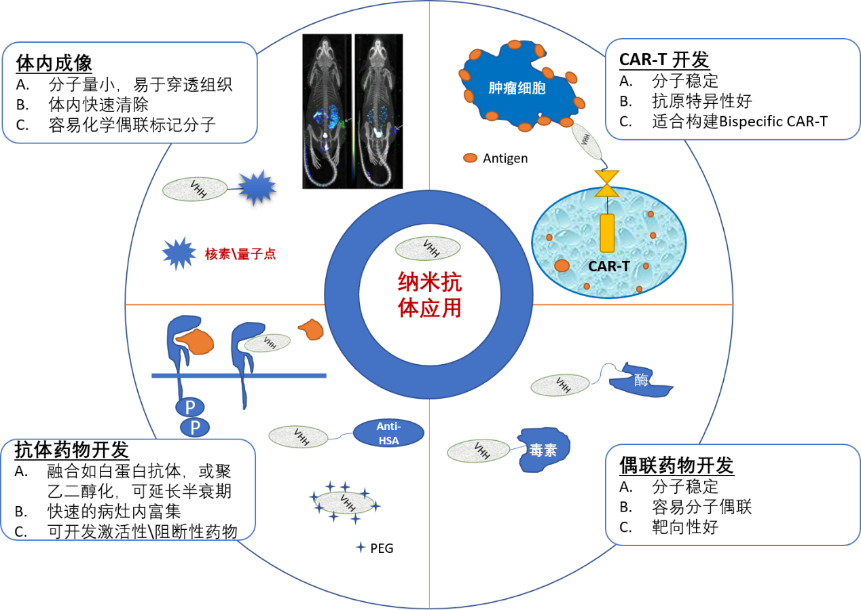
5. Our services.
We use flexible module one-stop service, according to customer needs can provide a full set of nano antibody screening and preparation one-stop service, can also provide some of the module services, as follows:
Module A: Animal Immunization
Customers can buy their own animals entrusted to us to raise, and antigen immunization. We can also use our alpacas for antigen immunization.
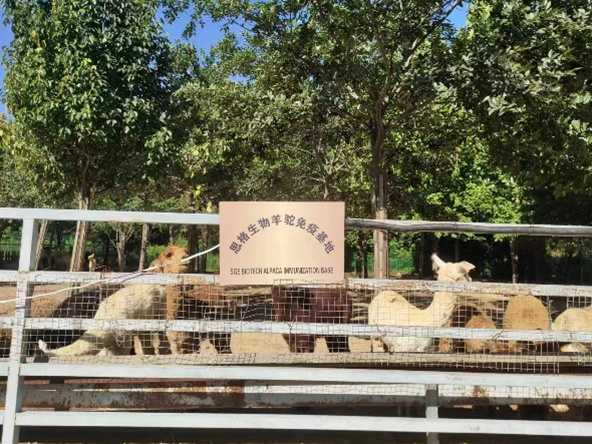

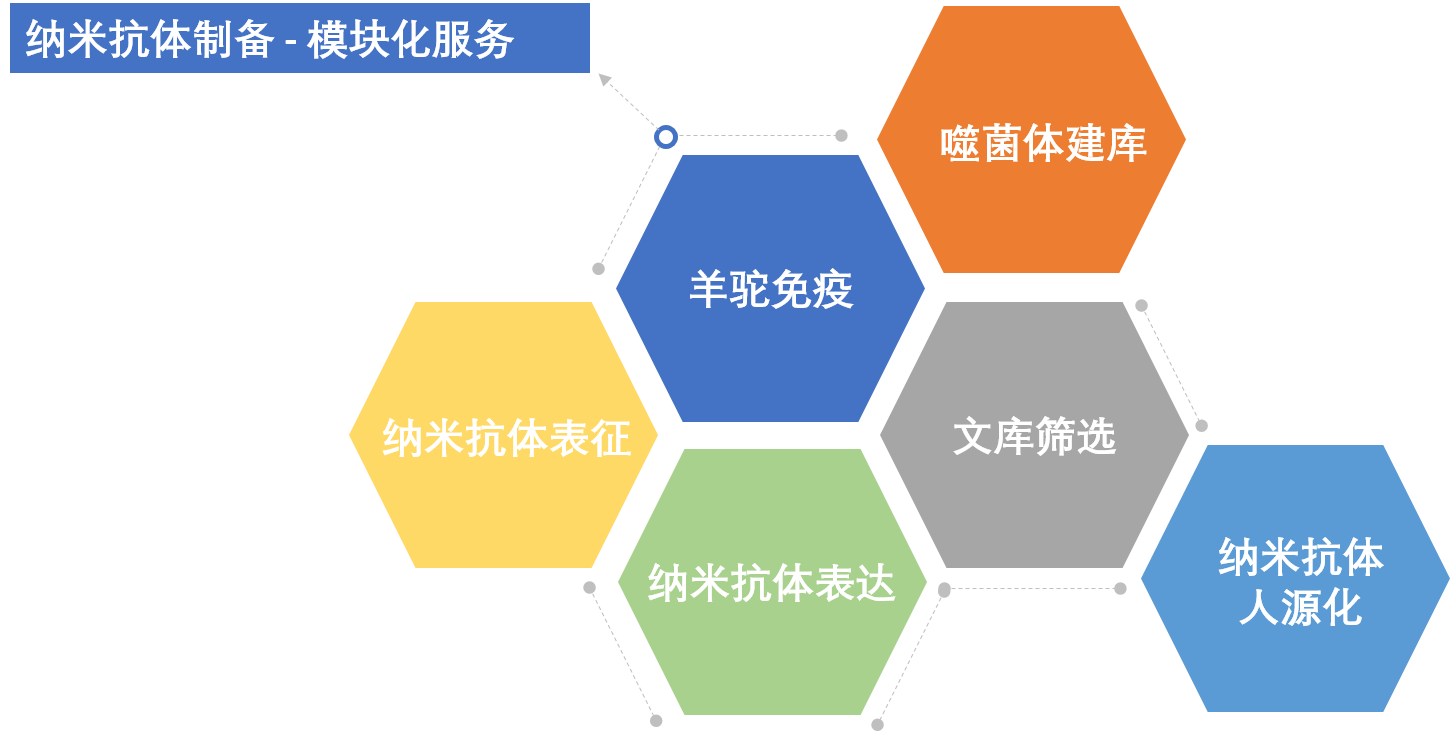 Module B: Phage library construction
Module B: Phage library construction
We use the self-developed effective phage library construction scheme to complete the antibody library construction, the library capacity can reach 10E9, to a large extent to ensure that the built antibody library contains a large abundance of nanoantibody candidate molecules.
Module C: Nanobody Library Screening
Different screening strategies are used according to the different purposes of the client's antibody use to ensure that the better antibody is screened to a greater extent. We can also use our self-developed NGS algorithm to combine NGS and phage screening to find more and better antibody sequences according to customer needs.
Module D: Nanobody Expression
With stable prokaryotic E.coli and eukaryotic HEK293 or CHO antibody expression platforms, GE AKTA equipment can be used to prepare and purify a large number of antibodies required by customers.
Module E: Nanobody Characterization
We can provide routine antibody characterization assays including SPR affinity assays, ELISA assays, FACS assays, nanobody stability assays, etc.
Module F: Humanization of Nanobodies
We have established a mature nano-antibody humanization technology program, can provide customers with nano-antibody humanization services, reduce the immunogenicity of nano-antibodies.
6. Nanobody screening process
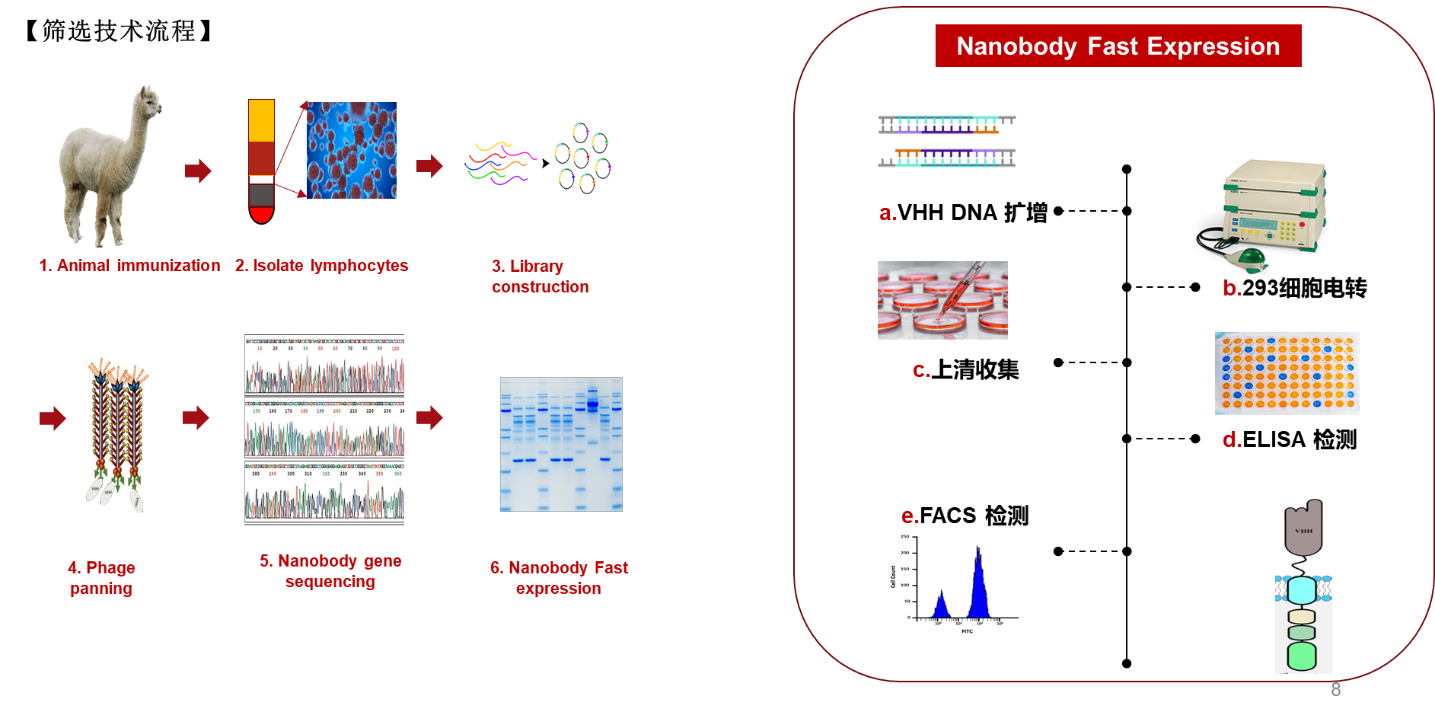
7. Antibody screening case
This project takes the tumor antigen as the target, uses the 293 cell expression system to complete the antigen preparation, at the same time prepares the positive control antibody and the overexpression cell line, immunizes the alpaca with the antigen and measures the animal titer, separates the alpaca peripheral blood after 4 immunizations, amplifies the VHH gene and establishes the phage library, obtains the nano antibody sequence that can bind the antigen by liquid phase panning.
